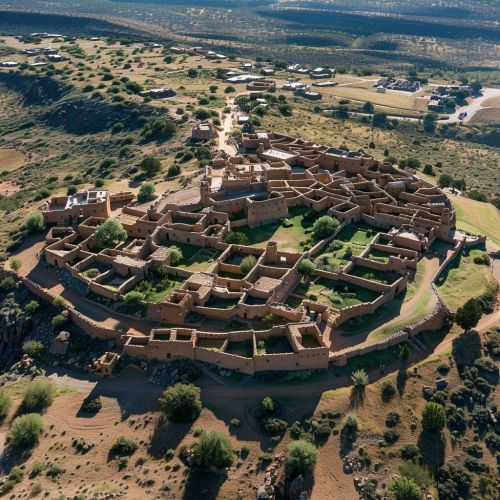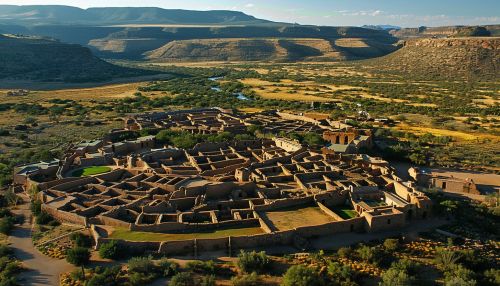Pueblo Bonito
Overview
Pueblo Bonito is one of the most extensively studied and famous Chacoan Great Houses in the Chaco Culture National Historical Park, located in New Mexico. It was built by the Ancestral Puebloans, a prehistoric Native American culture of the Southwest United States.


History
Pueblo Bonito was occupied from approximately AD 828 to 1126, during the Chacoan civilization period. The initial construction of the site began in the late 9th century, with the core structures of the complex being built by the mid-10th century. The building continued into the early 12th century. At its peak, Pueblo Bonito was one of the most important cultural and ceremonial centers of the Chacoan world.
Architecture
Pueblo Bonito is notable for its distinctive D-shaped layout and its impressive size. The complex contains over 650 rooms and covers three acres. The rooms were used for a variety of purposes, including residential, storage, and ceremonial functions. The architecture of Pueblo Bonito is characterized by its use of core-and-veneer masonry, a construction technique unique to the Chacoan culture.
Archaeological Investigations
The first recorded archaeological investigations at Pueblo Bonito were conducted in the late 19th century. Since then, numerous excavations have been carried out, revealing a wealth of information about the Chacoan civilization and its architectural, cultural, and ceremonial practices.
Significance and Legacy
Today, Pueblo Bonito is recognized as a UNESCO World Heritage Site for its outstanding universal value. It provides a unique insight into the complex social, economic, and political organization of the Chacoan civilization, and continues to be a source of fascination for archaeologists, historians, and visitors alike.
